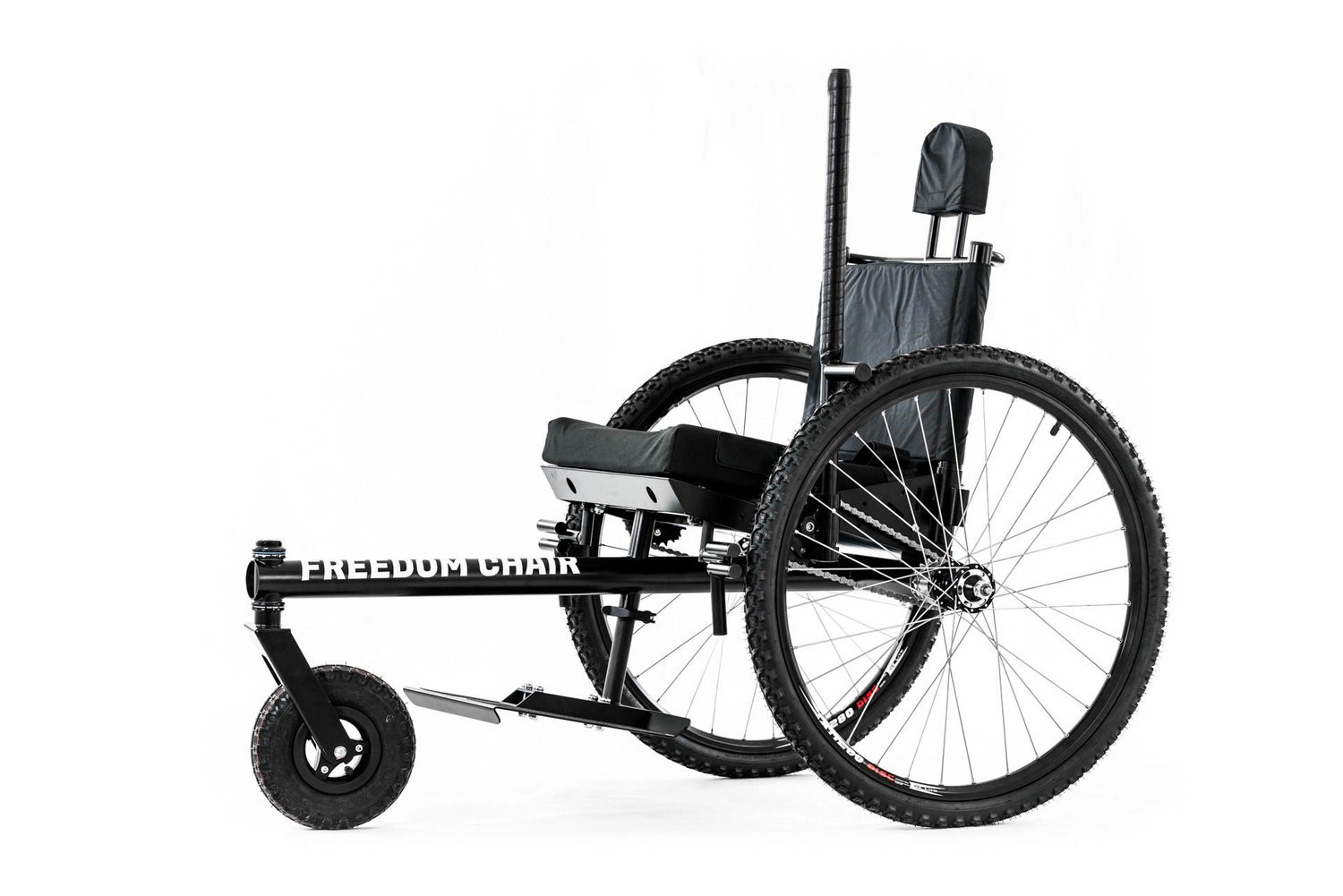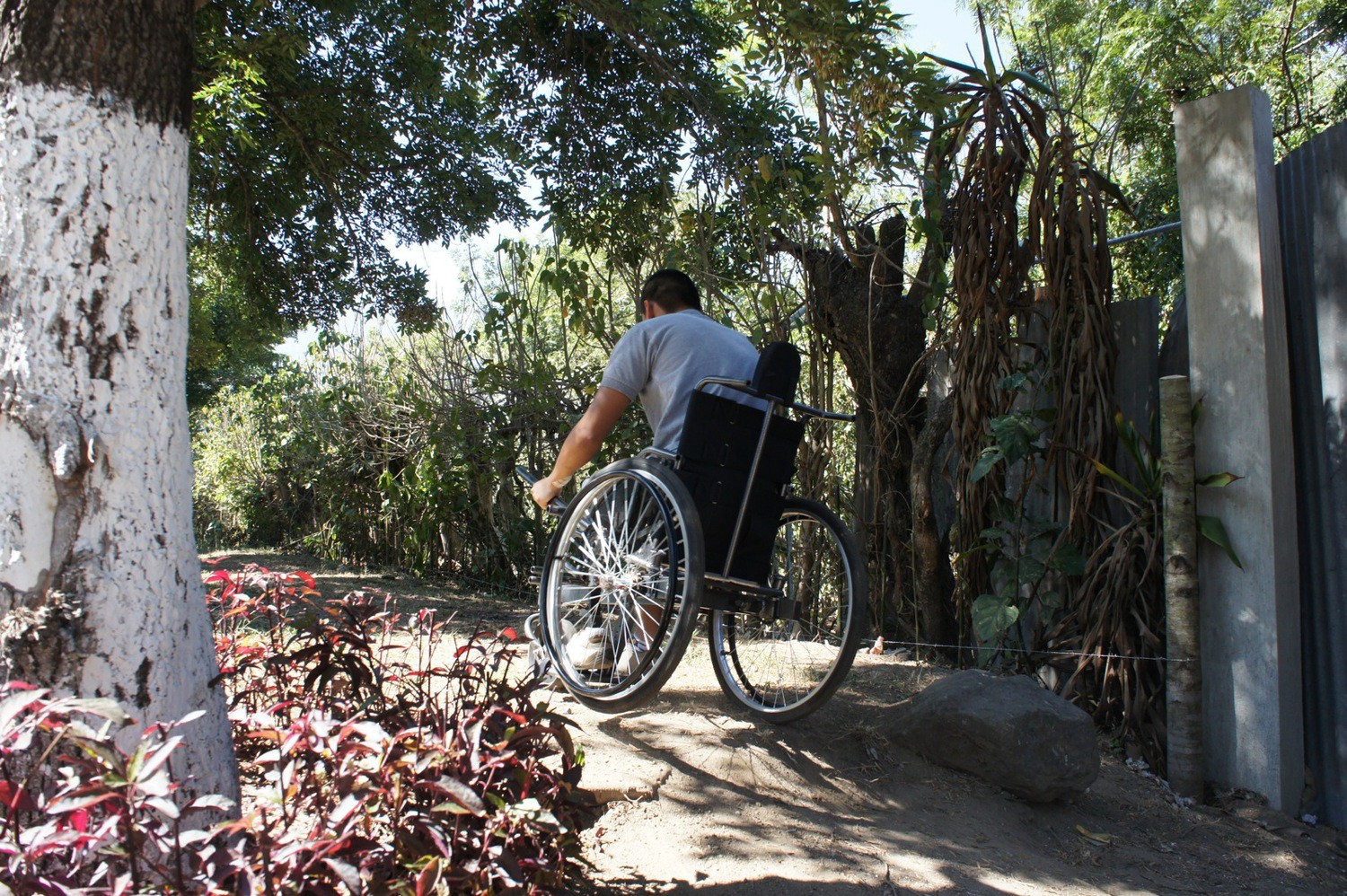By Bhamati Viswanathan

The World Health Organization (WHO) estimates that over 65 million people in the developing world need an appropriate wheelchair. Over 75% of people in the developing world live in rural areas, where standard wheelchairs do not work, as they are hard to mobilize over rugged terrain and rough local roads that may not be paved. Further, most wheelchairs are difficult to maintain: they are comprised of many pieces that are easy to break and hard to repair, and they are expensive to replace.
The Leveraged Freedom Chair (LFC) is a wheelchair that solves this international humanitarian problem. It enables people with disabilities in developing countries to gain mobility and independence, and it gives them the ability to navigate their environment in life-changing ways and at a viable cost. The LFC is built out of steel and bicycle parts that are commonly available in rural areas of developing countries. The parts and tools for maintenance and repair are inexpensive and commonly found. This makes it easier to repair the wheelchair at local bicycle shops or wherever spare parts may be found.

The construction of the LFC is engineered to meet the diverse challenges that arise in developing countries. The LFC uses a unique lever drivetrain which makes it both faster than conventional wheelchairs and sturdier when traveling over rough terrain. It does not use gears and derailleurs, which can be expensive and easily broken; it instead uses levers connected to the drivetrain to control velocity and speed. By using readily available bicycle parts in the production of the LFC, costs are kept down and users can maintain and repair the chairs themselves.
The lever construction is one of the high points of inventiveness of the LFC. Instead of pushing on the wheels like a regular wheelchair, LFC riders push on two levers, which are designed to be biomechanically efficient. LFC riders can shift gears by moving their hands up and down the levers. For smoother roads, riders push on a low part of the levers and shift into ?high gear,? which enables them to travel 80% faster than a regular wheelchair on tarmac. For rougher terrain, riders push on a high part of the levers and shift into ?low gear,? which enables them to ride over obstacles with 50% more torque than a regular wheelchair. The levers can be removed and stored on the wheelchair, which allows the LFC to be used like a regular wheelchair indoors.
The LFC was conceived and developed in 2007?2008 by four graduate students in the mechanical engineering program at MIT who then founded a company in 2012 called Global Research Innovation and Technology, or GRIT, to develop and commercialize their invention. The LFC has been in development since 2008. First-generation prototypes of the LFC were constructed in Kenya and Vietnam with community partners who were also local wheelchair producers. In 2014, GRIT secured Patent No. 8,844,959 for the LFC, a ?wheelchair with level drivetrain.?

The company now manufactures the LFC in India with a local partner and sells it in bulk for $250 per chair to non-governmental organizations (NGOs) and other development organizations. The aid agencies and NGOs that purchase the chair generally distribute the LFC to users free of charge. In 2015, the GRIT management team estimated that it had shipped almost 1,200 LFCs to 17 countries, including Guatemala, Haiti, Kenya, Uganda, Tanzania, India, the Philippines, and Vietnam.
The team at GRIT runs the company as a ?social enterprise,? pursuing a social mission (like a nonprofit) but also retaining the ability to make money off their patented invention. As a for-profit social enterprise, GRIT can accept money from nonprofit foundations that is congruent with its mission, but it can also raise private equity like a regular startup.
GRIT has earned numerous awards and honors for the LFC, including winning a Patents for Humanity Award from the U.S. Patent and Trademark Office in 2015.
After spending several years developing the LFC, GRIT decided to build upon its patented technology and develop wheelchairs similar to the LFC but more suited to use in first-world countries. The GRIT Freedom Chairs are somewhat sleeker in design, and have certain features that appeal to first world riders, such as a lightweight frame, optional customization, and the ability to be folded and stored in the trunk of a car. The sale of these chairs is intended in part to defray the costs of distributing chairs at or below cost in developing world countries. GRIT Freedom Chairs afford users access to previously-inaccessible terrains, and offer versatility to a broad array of riders, including American veterans. They are directly marketed in the U.S. in order to keep costs down.
People with limited mobility in developing countries face many daunting obstacles, and the lack of appropriate wheelchairs can severely limit their mobility, opportunities, access, and independence. The GRIT Leveraged Freedom Chair is an elegantly simple, inexpensive, and ingenious device that confers freedom to wheelchair users in the developing world. Its underlying technology, secured by vital U.S. patents, is also the basis of the GRIT Freedom Chair, which likewise transforms the lives of users in the developed world. Both the LFC and the Freedom Chair rely on secure property rights that enable their parent company to develop and market life-changing products that users can afford to ride, repair, and maintain. The ?all-terrain wheelchair? is truly an invention with worldwide relevance and reach.
#Innovate4Health is a joint research project by the Center for the Protection of Intellectual Property (CPIP) and the Information Technology & Innovation Foundation (ITIF). This project highlights how intellectual property-driven innovation can address global health challenges. If you have questions, comments, or a suggestion for a story we should highlight, we?d love to hear from you. Please contact Devlin Hartline at [email protected].
(This post first appeared on the CPIP blog.)


